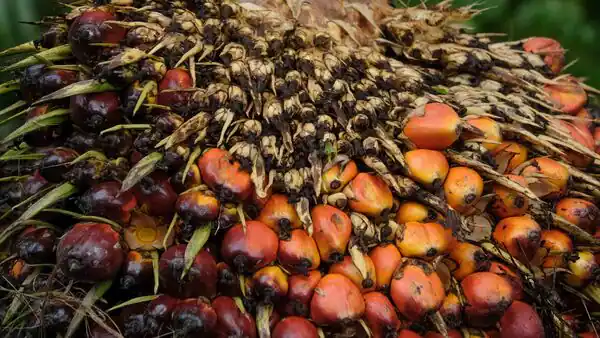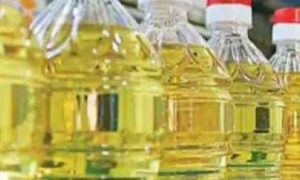Oil palm cultivation an economic win-win for India

Oil palm cultivation offers India a strategic path to cut edible oil imports, boost farm incomes, and enhance food security. Under the NMEO-OP, India aims to expand oil palm cultivation to 16.7 lakh hectares by 2029-30. With high yields and long-term profitability, especially for smallholders, and focus on using degraded land, India can become a global palm oil hub sustainably.
Stepping up domestic palm oil production can be a win-win for India, helping it slash its edible oils import bill and boost farm prosperity. The world’s most populous country is the largest importer of the commodity, which is present in everything from soaps and shampoos to ketchup and packaged snacks. This dependence has weighed on the country’s exchequer and left it vulnerable to price volatility and supply chain disruptions.
Surging global prices last year, for instance, forced India to drastically cut back on imports. Shipments in January reached a 14-year low as the country switched to alternatives like soy to meet its edible oil needs. While these alternatives exist and have helped mitigate the impact of volatile palm oil prices, they nevertheless leave India reliant on imports. Boosting domestic palm oil production is, therefore, critical to guaranteeing India’s long-term food security.
HSBC study The government recognised this and implemented the National Mission on Edible Oils-Oil Palm (NMEO-OP). It aims to increase the area under oil palm cultivation in mission mode to 10 lakh hectares by 2025-26 and then to 16.7 lakh hectares by 2029-30. If realised, it will help India achieve self-sufficiency and transform India into a global palm oil production hub. Legacy producers like Indonesia are shifting focus to the production of biodiesel, which is largely responsible for the recent surge in global palm oil prices.
FM Sitharaman That could put India in a position to capitalise, plug the supply gap and turn palm oil into a revenue earner from a burden on the exchequer. To do that, India will need to first meet the NMEO-OP’s objectives, and then expand production further. Efforts to expand oil palm cultivation across the country have seen mixed progress. While some regions are making notable strides, others are falling short of cultivation targets, with allocated funds remaining underutilized.
The main challenge lies in changing perceptions, most notably about palm oil’s sustainability credentials and growing awareness, particularly around the economic benefits it can deliver. Infrastructure and Partnerships: The Foundation of the Oil Palm Value Chain For oil palm cultivation to succeed at scale, it must be supported by robust infrastructure and a collaborative ecosystem. Oil palm is a highly infrastructure-dependent crop. It requires timely collection of Fresh Fruit Bunches (FFBs), processing within 24 hours of harvest, and efficient transport and cold storage systems to maintain oil quality and maximize yield. This makes the role of private processors crucial. With investments in crushing mills, nurseries, farmer training centres, and logistics hubs, processors ensure that farmers have access to markets, the right agronomic practices, and post-harvest support. But infrastructure alone is not enough. A collaborative approach between the government and private processors is essential.
While the government can facilitate land identification, funding, and policy support through schemes like NMEO-OP, processors can step in with on-ground execution, tech enablement, input supply, and guaranteed procurement—de-risking the journey for small and marginal farmers. When both parties work in tandem, it creates a powerful value chain that connects farm-level production to industrial-scale processing, ultimately delivering higher income to farmers. Highly lucrative for farmers It is a known fact that the oil palm is a highly lucrative crop. It is capable of producing as much as 3.4 – 4 metric tons per hectare of oil every year. In fact, the yield capacity of the oil palm is as much as five times that of other edible oil crops. What’s more, the oil palm has a near 30-year yield generating lifespan. Financially, that translates to returns as high as over Rs. 15 lakh over that time period from a single hectare, depending on yield conditions and fresh fruit bunch prices. If there are any question marks over its potential to generate returns for farmers, they stem from the roughly four-year gestation period before the oil palm starts generating yields.
The NMEO-OP not only offers viability gap funding viz. income guarantee for matured plantation but also incentivize farmers during the initial gestation phase of four years by providing them necessary planting support. They can also turn to intercropping. Farmers can grow crops like cocoa, red ginger, bush pepper, banana and ornamental crops alongside oil palms. This gives them a revenue stream while they wait for the oil palm to generate yields. It can then be continued once the palm oil production begins. The oil palm can, therefore, transform agricultural livelihoods, especially for subsistence farmers and small landholders. For instance, in Andhra Pradesh, hailed as an oil palm success story, some farmers have seen their incomes as much as triple after they started cultivating the crop.
Busting the deforestation myth The sustainability concerns around the oil palm are equally unfounded, especially in the Indian context. Oil palm cultivation over the years has acquired a reputation for causing damage to the environment. It has been blamed for widespread deforestation and the destruction of entire biospheres and ecosystems. But in India, the NMEO-OP recommends the establishment of oil palm plantations on barren and degraded lands. Far from causing deforestation, this can in fact rehabilitate and restore degraded land. In doing so it can add to a region’s green cover and in effect create a carbon sink. It’s important that these myths and outdated perceptions about the oil palm are busted. Because it presents a singular opportunity for India. If capitalized on, not only will it make the country self-sufficient in the production of edible oils but a global palm oil production hub.
To Read more about Edible Oil News continue reading Agriinsite.com
Source : The Hans India















